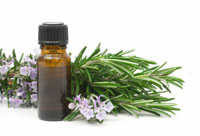|
How To Make Essential Oils And Other Frequently Asked QuestionsIf you’re wondering how to make essen What are essential oils? Essential oils are complex mixtures of naturally occurring compounds that exist in some plants which have fragrant flowers, leaves, wood, bark, roots or seeds. They are volatile, which means they evaporate when exposed to air. They are very fragrant, they do not feel slick or oily, nor do they leave an oily residue.The active constituents of essential oils are composed of hydrocarbons and oxygenated hydrocarbons, which can be grouped according to their molecular structure into terpenes, esters, alcohols, aldehydes, ketones and phenols. How are essential oils used? Generally, they are used for massage, for scenting an environment through diffusion, in warm baths or as a perfume. How do you diffuse essential oils? There are several types of diffusers used for fragrancing an environment if that's an approach you want to use regarding how to make essential oils work for you. Some–like the lamp ring and ceramic water reservoir/style with tea candles–use heat, but many don’t. A few drops of pure essential oil on a saucer works fine for small areas. An electric fan diffuser is better for slightly larger areas and the nebulizing diffuser is even better. What are “carrier” or “base” oils, compared to essential oils? Carrier or base oils are vegetable oils that are used to dilute essential oils so these products can be safety applied to skin. Carrier oils-such as almond, apricot, olive or avocado oils–are not really fragrant. They do not evaporate readily, they do feel oily and they leave an oily residue. Can I buy an essential oil without buying a carrier oil? That depends on how you’re going to use the product. You need to dilute oils used for massage, perfume or baths, but you can apply essential oils directly to diffusers. How should I store my essential oils? Shelf life is at least one year and probably two with proper handling. Oils should be stored in a cool (not cold) place, where they are not exposed to sunlight. We don’t’ recommend refrigeration as some oils can be spoiled by this procedure. To help prolong the life and quality of your products, buy oils shipped in dark-colored bottles. Open bottles only for use and keep caps securely closed. Exposure to air speeds the deterioration of any botanical product, including essential oils. How much of an essential oil should be added to a carrier oil? Because of their high level of concentration and purity, essential oils can be used sparingly (one or two drops per teaspoon of oil, for example). However, each oil is different and you should source appropriate recipes through books or web research. As a general rule of thumb, you add 2 to 4 drops of essential oil to a warm (not hot) bath. For a massage/body oil, you add 1 drop of essential oil per teaspoon of a carrier or base oil. For room fragrancing, add a few drops to a diffuser or a pot of steaming (not boiling) water. What’s the difference between essential oils and perfume oils? Essential oils are natural, while perfume (fragrance) oils are synthetic. We don't recommend them. Almost all essential oils are derived from the steam distillation of plant material. A few plants won't "give up" their oils easily so they are solvent extracted-these are called absolutes. Can essential oils be mixed with anything other than a carrier oil? All essential oils can be mixed (diluted) into any carrier oil. Essential oils will also mix with alcohol, but this is generally not advised. Essential oils do not mix with water without other additives. For example, if you are using an oil in your bath, you still need to add it to a carrier oil. Where do essential oils come from? Essential oils can be purchased either directly from growers or through known sourcing agents (people who know the oils and the growers). They're the experts who truly know how to make essential oils. Look for a supplier who checks each oil’s material data sheet and gas chromatograph, which will show contaminants, perhaps from fertilizers, pesticides or fungicides. Look for oils without adulterants, plus explore how the products are harvested. Steam distillation separates out many impurities that might otherwise be in or on the plant. How are essential oils harvested? Essential oils can be extracted from plants using a variety of methods. Some are extracted only through non-toxic methods including distillation, cold pressing, and, in a few cases, non-toxic solvent extraction. The best oils are pure, unadulterated, complete and from first run distillations (unless otherwise plainly stated). This explains how to make essential oils at the moment they’re harvested. Are essential oils organic? Some are certified organic. Many others are organic-but not certified-and others still are wildcrafted. It’s not possible for all oils to be certified organic; many come from countries where there is no certification body. They may well be organic, but there is no unbiased party who can verify it. Also, many essential oils are still wildcrafted; no one can certify them as either wildcrafted or organic. Are there safety issues around essential oils? Essential oils are generally considered safe when used and stored properly. Some oils are not recommended for pregnant women, epileptics and people with high blood pressure. Also, if you have sensitive skin, certain oils may aggravate this condition. For more information about this topic, you can search out recipes that give instructions on how to make essential oils. For more information, visit these pages: Aphrodisiac Foods? Sure, But Don’t Ignore The Power Of Scent, Too! Discover Your SCENTS-U-ALITY… Oil For Massage And Special Scents – Sex Tools That Keep On Giving Return to Sex Toys Home
|





 tial oils, and other basic information about their uses and sources, read our FAQ below.
tial oils, and other basic information about their uses and sources, read our FAQ below.